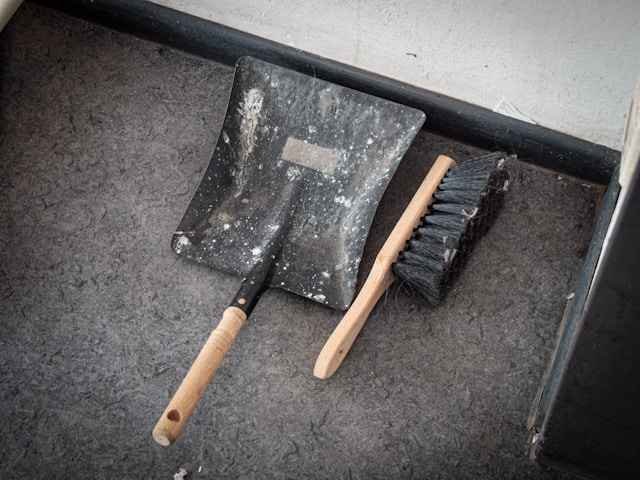Ahhh, yes. The anxiety of moving that big furniture and appliances is really a nightmare. Just imagine getting a scratch on your most cherished leather sectional sofa or a chip on your wood-carved dining set. What’s more is the thought of pushing these huge, heavy items through doors and stairs. No homeowner would like the sight of that!
But if you plan ahead and take the appropriate strategy, moving heavy furniture doesn’t have to lead to broken relationships with your moving assistants, damaged walls, or back injuries. These methods have been refined over years of experience by professional moving firms such as Butler’s Removals & Storage, and many of their tactics can be modified for do-it-yourself removals.
Planning Makes Perfect
Listen, you don’t want to be that person who starts wrestling with a couch only to realise it won’t make it through your hallway. Here’s your game plan:
- Make a heavy furniture inventory – Walk around like you’re doing reconnaissance and note the troublemakers in each room
- Measure everything – Doorways, hallways, that tricky staircase. Trust me, discovering your king-size bed won’t navigate that corner after lifting it is not fun
- Take photos before disassembly – Your future self will thank you at 10 PM when reassembling that entertainment centre
- Plan your timing – Tackle heavy stuff when everyone’s fresh, not after six hours of moving boxes
Essential Equipment and Tools
Okay, let’s talk gear. I know you’re thinking, “more stuff to buy?” But this equipment will save your back and friendships:
Must-Have Moving Tools:
- Furniture dollies – Four-wheel for appliances, two-wheel for tall pieces like bookcases
- Moving straps – Distribute weight properly instead of death-gripping furniture edges
- Furniture sliders – Slide heavy pieces across floors instead of lifting
- Moving blankets – Armour for your furniture against scratches
- Plastic wrap – Keeps drawers from sliding out at the worst moment
- Corner protectors – Insurance for tight doorway situations
Disassembly Strategy
Time to play furniture surgeon! The secret is knowing what comes apart:
Easy Weight Reduction:
- Remove all drawers from dressers and desks – they’re heavier than you think
- Take out the removable shelves from the bookcases
- Unscrew dining table legs – usually designed to come off
- Disassemble bed frames – headboard, footboard, and rails travel separately
Glass Components (Handle Separately):
- Remove mirrors from dressers
- Take off the glass table tops
- Wrap individually and transport separately
Pro tip: Put all screws in labelled bags and tape them to the furniture piece. Future you will avoid colourful language.
Proven Techniques for Safe Moving
Ready to actually move stuff? Proper technique beats brute strength every time. These tips to move heavy furniture safely come from decades of professional experience:
Basic Lifting Rules:
- Lift with your legs, not your back
- Keep items close to your body
- Never twist your spine while carrying weight
- If it feels too heavy, get help or hire pros
Special Situations:
- Stairs – Use the “high-low” method: bottom person holds the lower end, top person manages the higher end
- Tight corners – Try the “L-shaped” approach: tilt tall pieces like fridges at an angle to clear doorway headers
- Really stuck? – Sometimes, backing out and trying a different angle works better than forcing it
Protecting Your Property
Moving heavy stuff means potential damage. Here’s how to avoid costly repairs:
Floor Protection:
- Lay cardboard or moving blankets along your route
- Remove area rugs (tripping hazards)
- Keep pathways well-lit
Wall and Door Safety:
- Pad door frames with blankets or foam
- Remove door trim if you’re dealing with super-tight fits
- Take photos of existing damage before starting (especially important for rentals)
Loading and Transport Considerations
Proper truck loading keeps your stuff safe during the ride:
Loading Order:
- Heavy items first – against the truck’s front wall
- Distribute weight evenly from side to side
- Never stack heavy on light – creates instability and crushing damage
Securing Your Load:
- Use tie-down straps or rope for everything
- Consider load bars for extra anchor points
- Take your time on the loading ramp – control beats speed
Common Mistakes to Avoid
Even with the best intentions, people make these classic blunders that turn moving day into a disaster:
The “Wing It” Approach:
- Skipping measurements and getting stuck halfway through doorways
- Not clearing pathways beforehand (bye-bye, decorative vase!)
- Forgetting to protect the floors until you see the first scratch
Physical Mistakes:
- Trying to be a hero – attempting to lift alone what clearly needs two people
- Ignoring your body – pushing through back pain instead of taking breaks
- Rushing the process – speed kills furniture (and friendships)
Preparation Fails:
- Not having the right equipment ready
- Failing to communicate with helpers about the plan
- Underestimating how long everything will take
Trust me, spending an extra hour planning beats spending a weekend fixing drywall or nursing a sore back.
Weather and Timing Considerations
Mother Nature doesn’t care about your moving schedule, but she can definitely ruin it. Here’s how to work with (or around) the elements:
Weather Challenges:
- Rain – Wet furniture is heavier furniture, plus slippery surfaces are dangerous
- Snow/Ice – Loading ramps become death traps, plan for extra time and salt
- Extreme heat – Heavy lifting in 90°F weather leads to exhaustion fast
Timing Strategies:
- Start early – Beat the heat and have maximum daylight
- Check forecasts – Have backup dates ready
- Plan indoor breaks – Especially important for older helpers
Seasonal Considerations: Moving in winter? Keep pathways clear of ice and have towels ready for wet furniture. Summer moves require plenty of water and frequent breaks. Spring and fall are ideal, but book professional help early since everyone else has the same idea.
When to Call Professional Movers
Sometimes the smart money is on hiring pros. Here are clear signs it’s time to make that call:
Definite Professional Territory:
- Pianos (seriously, don’t even think about it)
- Gun safes or heavy security equipment
- Antiques worth more than your car
- Items requiring special tools or techniques
Situational Red Flags:
- Multiple flights of stairs with no elevator access
- Narrow hallways in older buildings
- Valuable items you can’t afford to replace
- Physical limitations among your helpers
The Math Factor: Sometimes hiring pros costs less than potential damage. A scratched hardwood floor or broken family heirloom quickly outweighs moving fees. Professional movers carry insurance and have experience with tricky situations.
Conclusion
Well, it doesn’t have to be a nightmare to move big furniture if you plan ahead and use the right techniques. The essential components include patience, the right tools, and acknowledging the physical demands.
Remember:
- Take your time and prioritise safety
- Don’t be afraid to ask for help when pieces exceed your comfort zone
- Professional movers like Butler’s Removals & Storage exist for those extra challenging situations
Whether you DIY or hire pros, success comes down to thorough preparation and careful execution. Focus on safety, gather the right tools, and you’ll be settling into your new home without the drama. With smart planning and attention to detail, packing your furniture and executing your move can go smoothly.
For more website our website Home Threads







